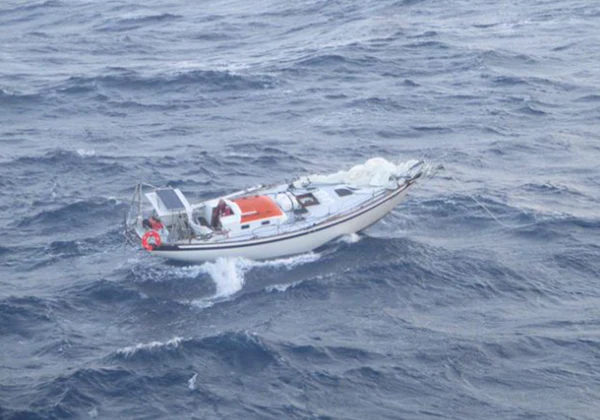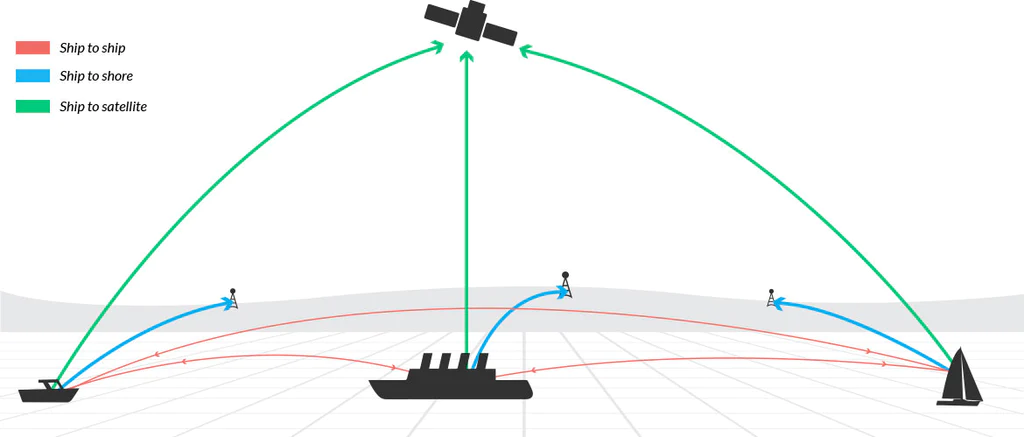Best Practice AIS For Bluewater Sailing Yachts
Automatic Identification System (AIS)
AIS provides position, identification and other information about a vessel to other vessels and to coastal authorities automatically.
There are three classes of technology currently in use. Class A is installed on regulated commercial vessels, while Class B and Class B+ is installed mostly on recreational vessels.
Class B+ Recommended For New Vessels And Upgrades
With 5 watts output power (compared to 2 watts for Class B), a Class B+ transponder has improved performance over water when vessels are at maximum AIS range, and are more reliably received by satellites.
In high traffic areas with potential for AIS congestion, Class B+ transponders are likely to be detected earlier and more consistently than vessels fitted with Class B transponders.
This is because the Self Organising Time Division Multiple Access (SOTDMA) protocol utilised by Class B+ transponders has a higher priority than the Carrier Sense Time Division Multiple Access (CSTDMA) protocol utilised by Class B transponders.
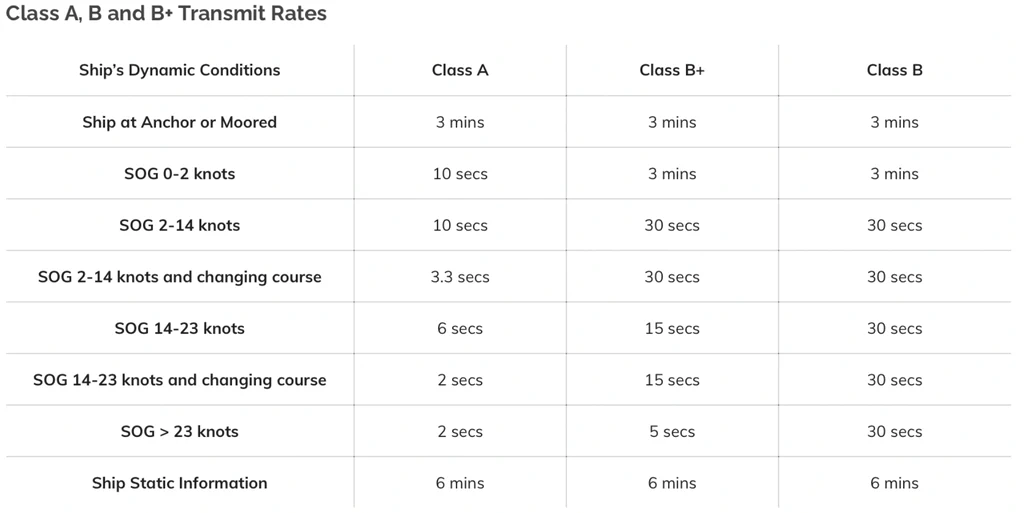
MMSI Must Be Issued By Flag State
The Maritime Mobile Service Identity (MMSI) which uniquely identifies your vessel must be issued by the authorities in the country in which the vessel is registered.
The MMSI 9 digit number (the first three digits signifying the country of registration), survives transfer of ownership, and stays with the vessel for life (unless re-flagged).
Having an MMSI from a foreign state programmed into your AIS transponder can create confusion in a search and rescue operation.

Shared VHF Radio / AIS Antenna
Using an antenna tuned for VHF radio only can reduce AIS signals by 11% or more.
Choose a broadband VHF antenna with VSWR of 1.5:1 or better between 156 - 162MHz. Vesper, Morad and Shakespeare have antennas designed for both VHF radio and AIS using a splitter.
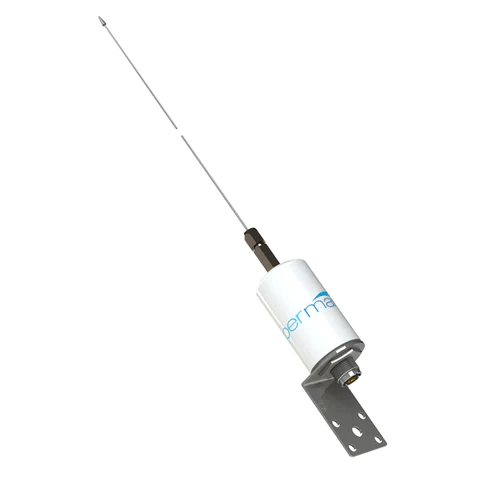
Low Loss Coaxial Cable
Light weight antenna cables reduce AIS range. Most installers use lighter weight and lower cost RG8X or RG-58CU.
Upgrade to marine grade Ancor RG-213 or Times Microwave LMR400-UF Ultra Flex low loss coaxial cable for all VHF radio and AIS connections.
Use gold plated brass connectors and seal with self amalgamating tape to prevent moisture intrusion.

Ensure VHF Radio / AIS Splitter Has Zero Loss
Splitters are either standalone (external) or embedded within the AIS transponder.
External splitters interrupt AIS when the VHF radio is transmitting. This may be a factor in a man overboard scenario (discussed later).
Embedded splitters in next generation transponders use software to split the signals, allowing VHF radio use without interruption to AIS.
Ensure your splitter has a receive path amplifier to make up for splitter loss.
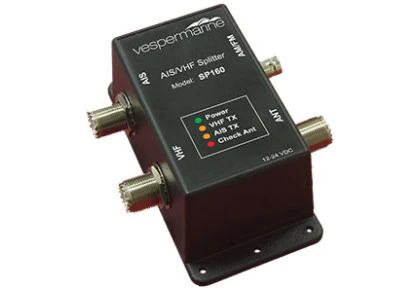
Obstructions Are A Major Cause Of Poor Performance
"Ensure there is at least 2 metres horizontal separation between your AIS antenna and other antennas or metal objects."
Do not use separate VHF and AIS antennas on a masthead, as they cannot be separated far enough.
On a masthead, the shared VHF radio / AIS antenna must not be obstructed by the mast, wind vane or navigation lights.
Use a short post to lift the antenna above obstructions. In the photo below, the antenna is obstructed.
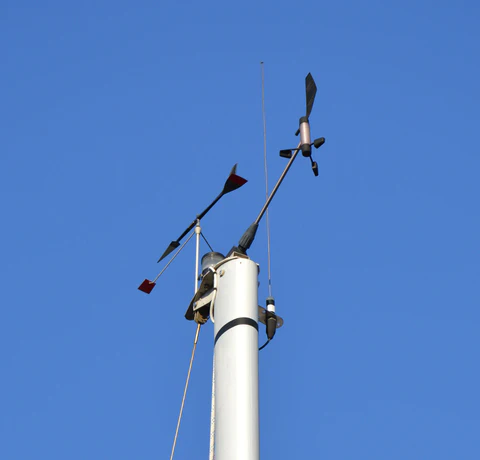
You Have To Get Everything Right
You need the right antenna, mounted clear of obstructions, fed with low loss coaxial cable using high quality connectors, and a zero loss splitter for AIS to perform well.
If ANY of above are not best practice, then it won’t matter what height you place the antenna, it simply won’t perform well. Range will be limited, and satellite reception unreliable.
"A stern post mounted antenna at 3 metres above sea level installed according to best practice can easily outperform a poor mast head installation at 20 metres above sea level."
Masthead Installation Considerations
A masthead mount provides the greatest AIS range provided best practice installation guidelines are strictly followed.
There is a total loss of VHF radio and AIS if your vessel is dismasted. You must also have a stern post mounted antenna as backup, or carry an emergency antenna that can quickly be mounted on the stern rail.
With a shared VHF radio / AIS antenna, MOB AIS operation will be interrupted if the VHF radio is used at the same time.
Consider an operating procedure that prohibits use of the VHF radio when you have a person in the water and are trying to locate them using AIS.
The exception to above is if you have a next generation AIS transponder which permits VHF radio and AIS transmission / reception at the same time.
There is a risk of interference from masthead LED navigation lights. This can severely degrade AIS performance. LED lights which meet regulatory standards should not cause interference.
Stern Post Installation Considerations
A stern post (3-4 metres above sea level) mounted AIS antenna can usually see a class A transponder on a freighter or tanker at 20nm if best practice installation guidelines are strictly followed.
Class B targets or vessels with lower height AIS antennas may only be visible at 5-10nm due to the reduced height of your AIS antenna.
A stern post mounted AIS antenna will survive a dismasting, unless the mast falls over the stern.
Range for MOB AIS is about 4nm (compared to 10nm for a masthead antenna).
A stern post mounted VHF radio / AIS antenna provides a redundant antenna for both VHF radio and AIS when used in addition to a masthead antenna.
Passage Guardian Recommendation
"Belts and braces for blue water sailing yachts."
For new installations and upgrades, choose a Class B+ SOTDMA AIS transponder.
Install a shared VHF radio / AIS antenna on the masthead and use a splitter. This is your primary VHF radio and AIS antenna.
For an emergency antenna, install a second VHF radio / AIS antenna on a stern post, or if not available, on the stern safety rail. An RG-58CU coaxial cable with PL-259 connectors should be stowed and used to connect the emergency antenna to the splitter should the masthead antenna fail.
Both antennas must be installed according to best practice guidelines explained previously. Failure to adhere to all guidelines will result in poor performance. This is particularly true for satellite reception of AIS signals.
Keep a SO-239 barrel connector near the splitter so that it can be bypassed in the event of a failure. If an AIS transponder with an integrated splitter fails, this barrel connector can be used to restore VHF radio service.
AIS When In Distress
Keep your AIS running as long as possible.
-
When you activate your EPIRB, the rescue coordination centre will look for an AIS target (using satellite acquired data) near the EPIRB location.
-
The rescue coordination centre will send a ship towards you, which will be significantly aided by the reception of your AIS transmission, as it is an overlay on the ship radar and ECDIS once within range.
-
Attempting to sight and come alongside a small yacht in heavy seas and reduced visibility is exceptionally challenging for the ship's master.
-
The AIS data provides your exact position, reducing time to arrive on scene, and minimising the risk of being run down due to not being visually sighted early enough.
